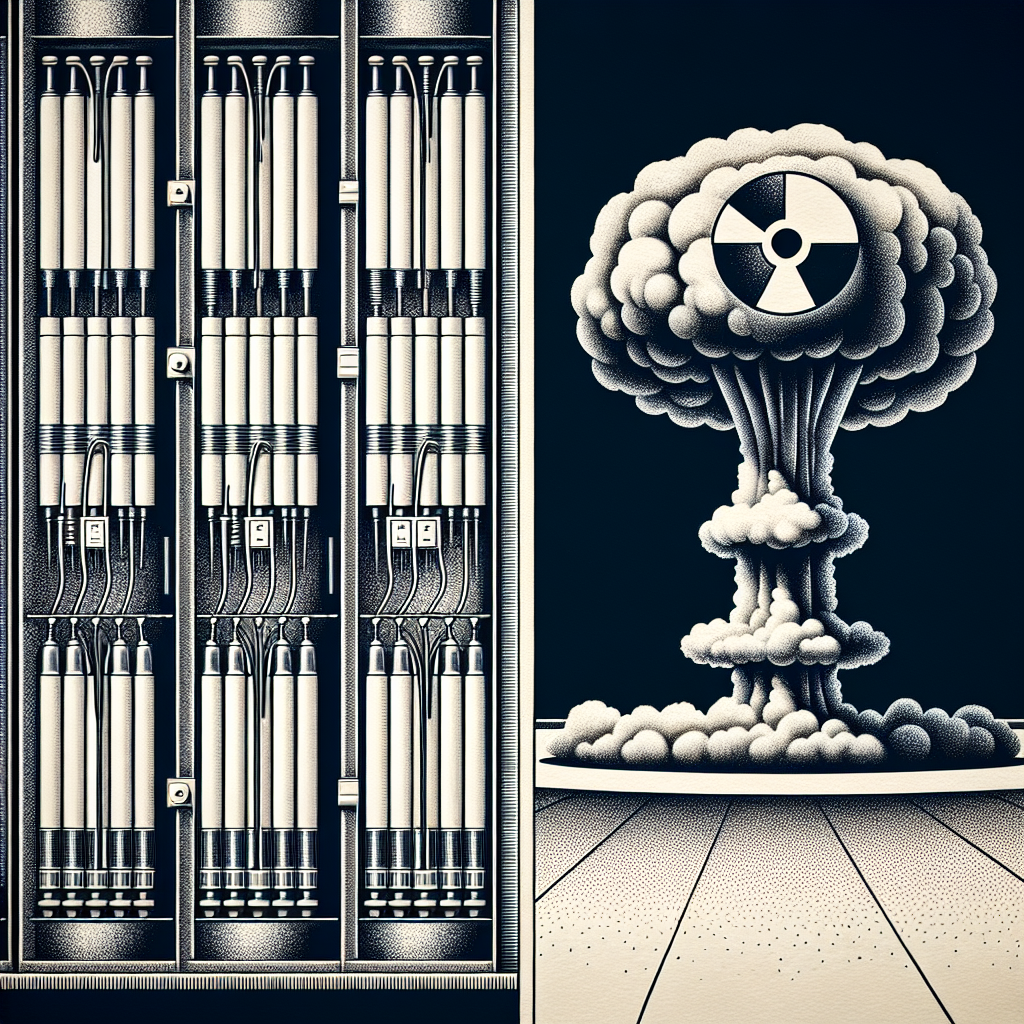Unmasking the Real Challenge of Nuclear Weapons: Material Over Mechanics
The popular narrative spun around the creation of nuclear weapons is often as explosive and dramatic as the devices themselves. The tales frequently center around enigmatic designs and secret projects hidden away in remote labs like Los Alamos. However, as a revelation from a seasoned Manhattan Project scientist highlights, the true story might not be as intricately technical as we think. This analysis delves deeper into the real challenge behind nuclear armaments - securing the critical mass of necessary materials rather than the complexity of their design.
The Myth of Complexity in Nuclear Weapon Design
The idea that the intricacy of nuclear weapon design is the pivotal barrier to their creation is pervasive. Historical accounts and cinematic portrayals alike emphasize the secretive and complex nature of projects like those undertaken at Los Alamos during the Manhattan Project. Despite this, insights from those directly involved suggest otherwise. The process described — merely dropping one subcritical piece of uranium onto another from a height — underscores a shocking simplicity in triggering a high-level nuclear explosion.
These revelations prompt us to reconsider what we've commonly accepted about nuclear weapon development. It’s not about the convoluted mechanics; it’s about the sheer availability of fissile materials.
The Critical Role of Fissile Materials
The focal point of nuclear weapon capability turns out to be the procurement of uranium-235 or plutonium. These materials are the core ingredients necessary to achieve the critical mass required for a nuclear explosion. The challenge, therefore, is not as much in the assembly, which could be rigged up with even rudimentary technology, but in acquiring sufficient quantities of these potent elements.
In the international sphere, this translates to stringent monitoring and regulation of these materials. Non-proliferation treaties and international oversight attempt to curb the spread and access to uranium and plutonium. These efforts underscore the global understanding of the real threat posed by these materials when they fall into the wrong hands.
For further reading on the history of the Manhattan Project and its global impact, visit The Atomic Heritage Foundation.
Dispelling the Myths: It’s Easier Than You Think
The assertion that a functional nuclear weapon could be fashioned out of "wooden boxes" if necessary, might sound hyperbolic, but it serves to highlight an overlooked truth. The actual assembly of a basic nuclear weapon can be scarily simple if one possesses the necessary amount of fissile material. This simplicity makes the control of materials even more critical and daunting.
This reality shifts the narrative from one of complex scientific endeavor to a race and struggle for material security. It underlines the importance of international vigilance and cooperation in the face of nuclear threats.
International Implications and Security Measures
Understanding that the barrier to nuclear armaments is more about material than mechanics changes how nations approach nuclear security. It’s not merely a matter of safeguarding secrets, but rather preventing access to materials. The international community's focus is thus on tracking and controlling the sources and supply chains associated with uranium and plutonium.
These materials are not only scarce but are also heavily guarded, with protocols in place to prevent their misuse. The challenge lies in maintaining a balance between peaceful nuclear energy development and the prevention of nuclear weapon proliferation.
Concluding Thoughts: A Call for Renewed Focus
The insights provided by those who were at the forefront of nuclear weapon development during the Manhattan Project reveal a starkly different picture of what the real challenge is. While the design of nuclear weapons can still involve sophisticated technology, particularly for more advanced types, the fundamental barrier remains the acquisition of critical materials.
As the world continues to navigate the murky waters of nuclear safety and politics, redirecting focus toward material security and international cooperation is imperative. Only through a combined global effort can we hope to mitigate the risks associated with these powerful and destructive technologies.
In conclusion, the tale of nuclear weapon development is less about the enigmatic geniuses and their secretive projects, and more about the elemental struggle to control the building blocks of destruction. This essential shift in perspective not only redefines historical narratives but also recalibrates modern strategies in nuclear defense and international safety protocols.
For those interested in understanding current nuclear non-proliferation efforts and material security measures, visit The Nuclear Threat Initiative.
Related News
- The Global Dilemma: Nuclear Weapon Proliferation and its Containment
- Navigating the Perils of Nuclear Deterrence: A Call for Collective Responsibility
- The Ever-Present Threat: Analyzing the Odds of Nuclear Deterrence Failure
- The Transformative Impact of Nuclear Energy on Warfare
- The Inevitability of the Atomic Bomb in a World Without World War II
